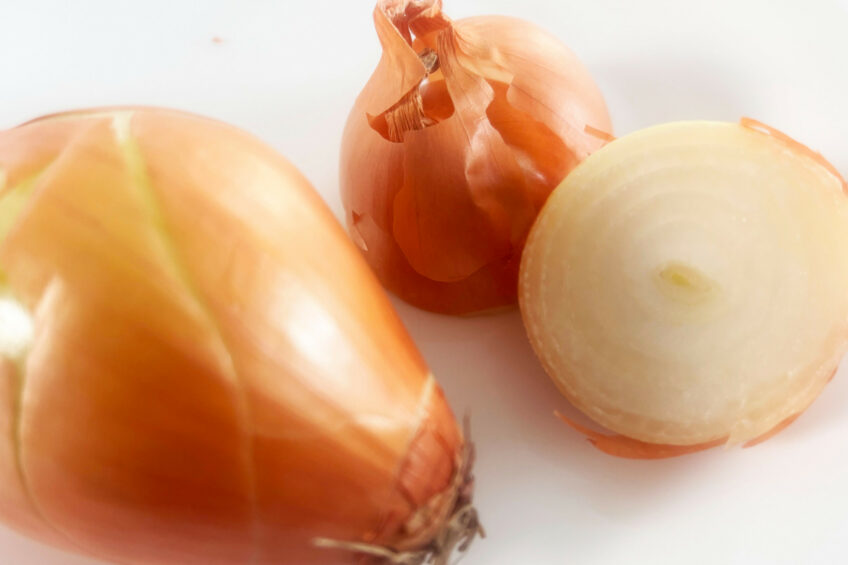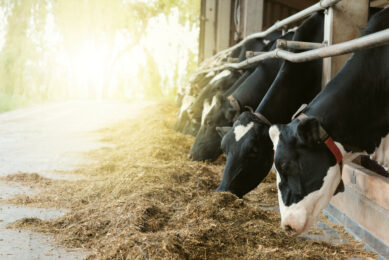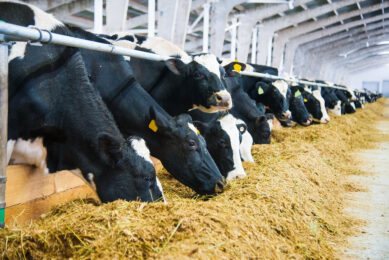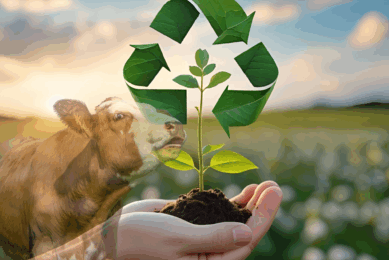A natural feed additive: Onion peel in the cow diet to reduce methane

Showing promise as a natural feed additive, a recent study evaluated the impact of onion peel in dairy cow diets. Results indicate better nutrient degradability and the potential to reduce methane.
The study, published in the journal Animals, reveals that onion peel, a by-product of the onion processing industry, is showing promise as a natural feed additive and the potential to reduce methane emissions. The study looked at the effects of different levels of onion peel on 2 different diets for dairy cows.
The study evaluated different inclusion levels of onion peel at 2.5% (OP2.5), 5% (OP5), 7.5% (OP7.5), and 10% (OP10) on the in vitro fermentation of 2 diets: a total mixed ration referred to as high concentrate (HC), and corn silage referred to as high forage (HF).
In addition, total gas production, methane (CH4), carbon dioxide (CO2), ammonia (NH3), and hydrogen sulfide (H2S) concentrations, as well as nutrient degradability, were assessed.
Results
The HC diet produced more gas but less CH4, CO2, NH3, and H2S compared to the HF diet. The onion peel at all levels increased CH4, CO2, NH3, and H2S concentrations in the HF diet. The OP2.5 treatment had the lowest degradable dry matter in the HC diet, while the onion peel linearly increased degradable acid detergent fibre in both diets.
The lowest total volatile fatty acids and acetate were observed with the OP5 treatment in the HC diet, while OP5, OP7.5, and OP10 had lower total volatile fatty acids concentration in the HC diet.
The OP7.5 treatment increased gas production and CH4 and CO2 production in the HC diet. However, the OP5 treatment had the lowest CH4 production in the HF diet. The highest degradable dry matter was observed with OP7.5 treatment in the HC diet with lower values noted at different inclusion levels in the HF diet. Inclusion of onion peel had no effect on total volatile fatty acids, and individual volatile fatty acids in both diets. Incorporating 5% of onion peel in the HF diet is recommended as the optimal inclusion level to decrease ruminal methane production and improve nutrient degradability.
Conclusion
The study concluded that onion peel supplementation is more suitable for HF diets than HC diets. The results suggest that the adding onion peel indicates a promising strategy for improving ruminal fermentation efficiency, and reducing CH4 production in HF diets compared to HC diets. The recommended levels of onion peel are not very clear; however, onion peel at 5-10% to the HF diet enhanced nutrient degradability and reduced CH4 production, and increased total volatile fatty acids, acetate, and propionate. Therefore, additional in vitro and in vivo studies are needed to clarify the underlying mechanisms of action, evaluate the long-term effects of onion peel on animal performance and environmental sustainability, and address potential challenges in translating these findings into practical feeding strategies.
The study, published in the journal Animals, was authored by Lydia K. Olagunju, Oludotun O. Adelusi, Peter A. Dele, Yasmine Shaw, Rosetta M. Brice, Oluteru E. Orimaye, Jorge A. Villarreal-González, Ahmed E. Kholif, Uchenna Y. Anele, Department of Animal Sciences, North Carolina Agricultural and Technical State University and Hye Won Kang, Department of Family and Consumer Sciences, North Carolina Agricultural and Technical State University.
Join 13,000+ subscribers
Subscribe to our newsletter to stay updated about all the need-to-know content in the dairy sector, two times a week.










